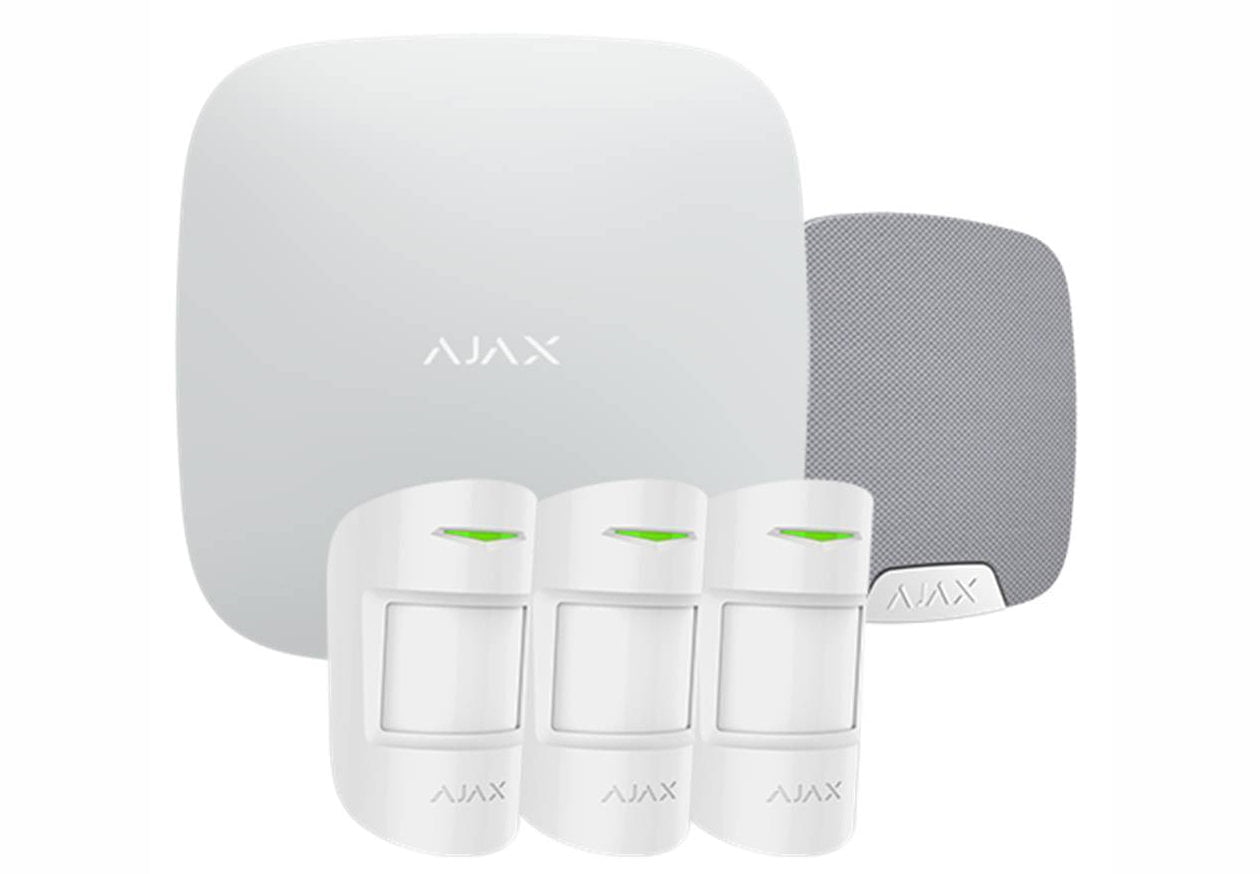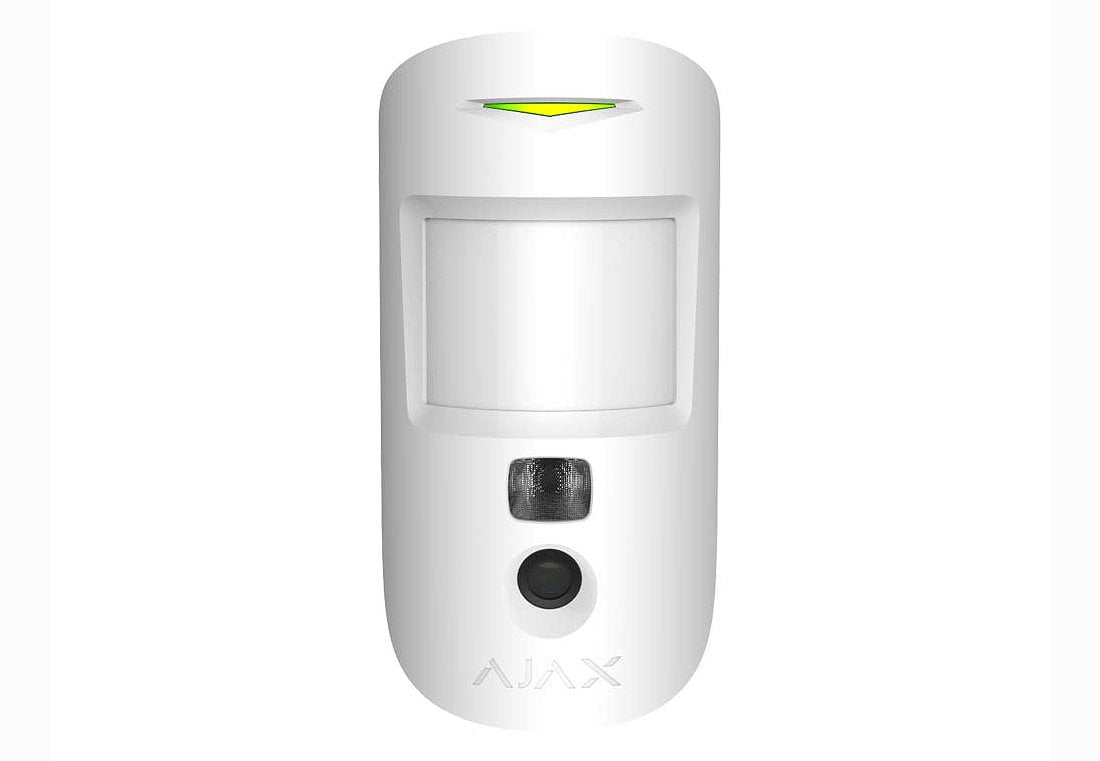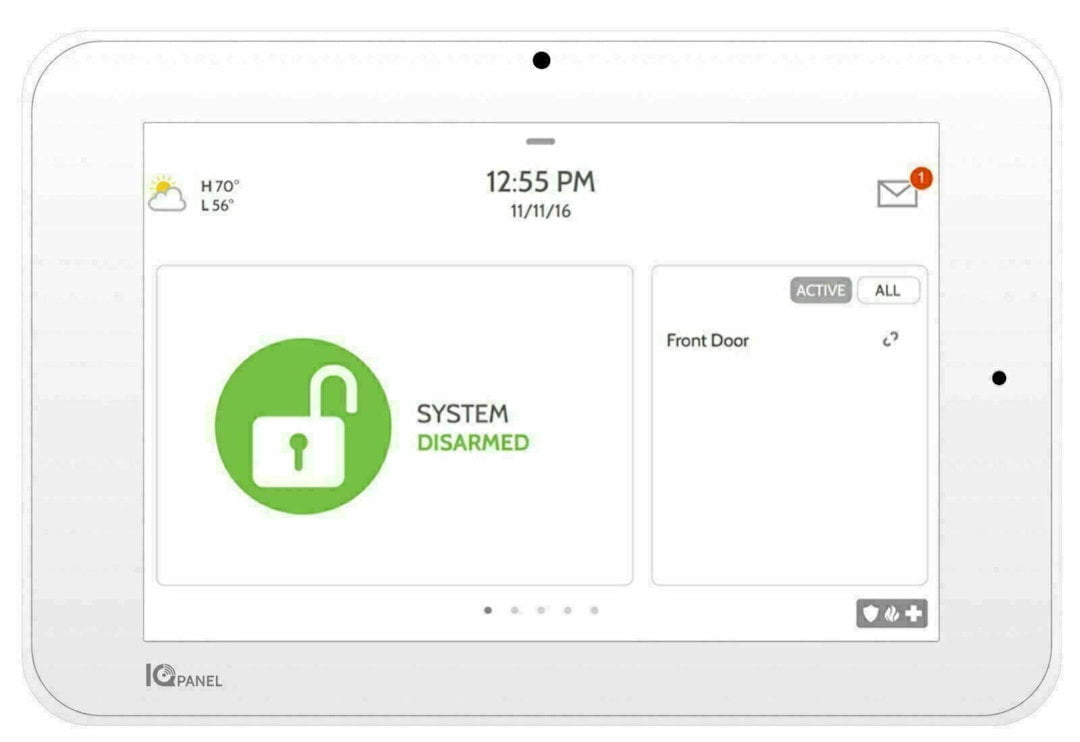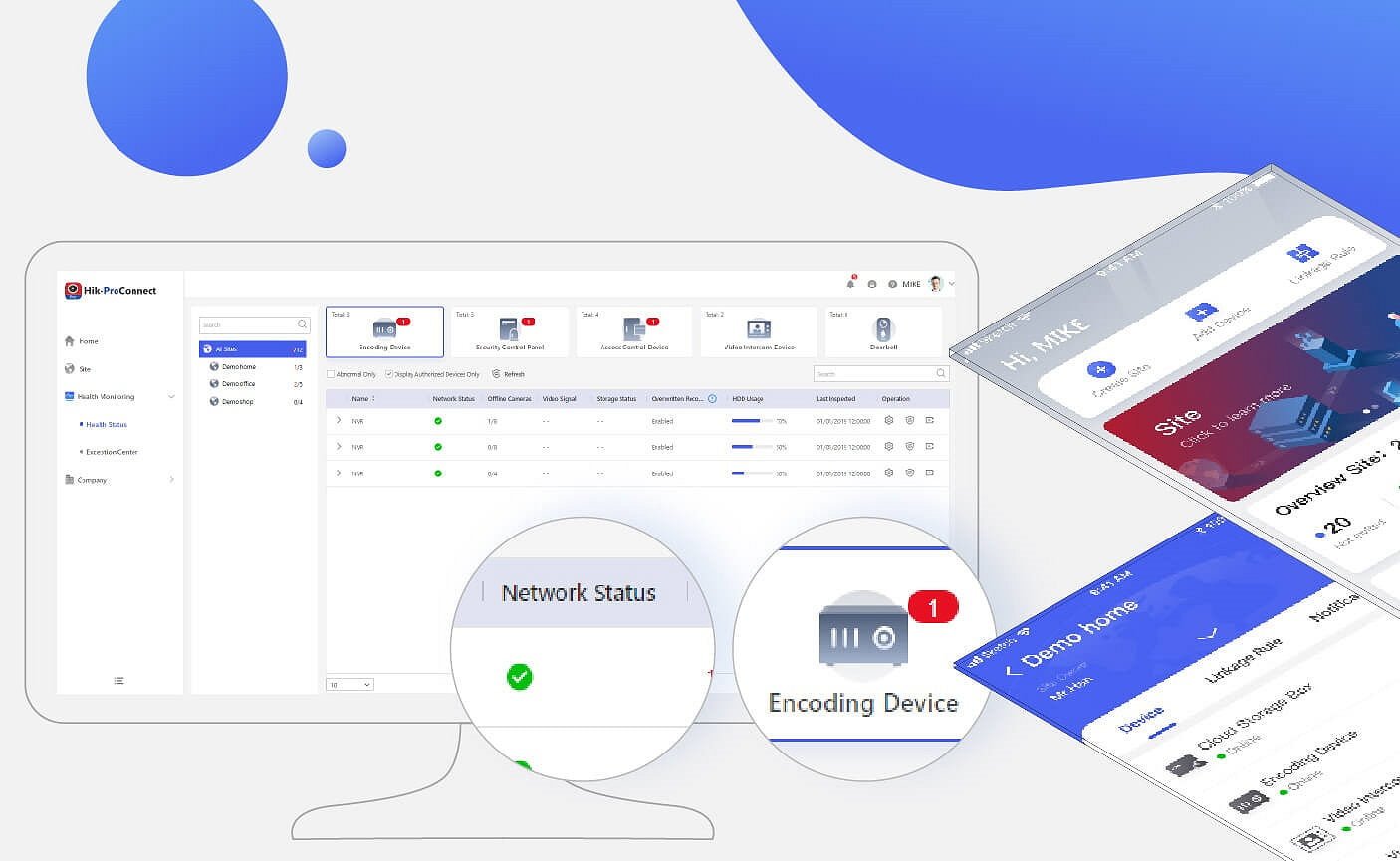Latest Greatest Alarm Panels
♦ Latest greatest alarm panels – what are the key features of the latest, greatest alarm panels for users and installers?
Choosing the best alarm panels is a juggling act. Sure, you want plenty of features and functions, but there are other qualities that are just as important when it comes to providing customers a reliable solution they’ll want to continue using in the long term. Important features for installers include remote management, but techs will also value solutions that have serious sales hooks.
If there’s automation, it needs to support multiple wireless bandwidths – for instance Wi-Fi and Z-Wave. When it comes to security devices, spread spectrum and various 900MHz frequencies are more secure than lower frequency ranges shared with devices like garage door closers. A good cross-section of devices is important, too – you never know which bit of functionality – sensing or reporting – is going to sell the system.
Cloud support is likely to be appealing, too. End users like remote management, installers appreciate remote trouble shooting. For monitoring stations, things are opaque. You might want app-based management, but may not want self-monitoring of intrusion events, which should instead be directed to professional monitoring stations.

A winning alarm panel might also have access control – there are applications where managing a single door is valued in larger residential and small commercial applications. Access control might be integration of a smart door lock, or a video intercom with remote access.
General qualities you need include reliability, multiple monitoring paths – that means 4G not 3G – expandability, automation and video verification capability within the product suite. You’d also be thinking about a functional and intuitive user interface that offered long MTBF in the face of hard labour. As well as being easy for end users, you’d want the system to be simple to program.
According to Tim Prag of NAS Australia, at the top of the list of must-have features is connectivity with smart devices to allow remote management and support.
“For many years people have been living on their smart phones and smart watches, so including smart alarms is an evolution, not a surprise,” Prag says. “In our case with AJAX solutions, push notification are delivered in a split second to Android or iPhones – the result being that end users are offered more intuitive information assuring them their homes and families are protected.
“One of the latest functions is the ability to press a panic button on the AJAX smart phone app and not only send the event to other users but also send the GPS location of the person in distress, providing live tracking. If the person is in moving vehicle, and if the device remains switched on, you will be able to relay the information to emergency services.”
A key issue for security installers is trying to decide what’s important for them in a modern alarm system. According to Prag, what installers want most is simplicity.
“Having over 30 years’ experience in the intrusion market we would always say installer and end user simplicity within the menus, along with reliability and cost effectiveness, are the key demands – but I think we know we want more,” Prag says.
“It has been a long time since I’ve been able to say a full intrusion system has architecturally met my expectations, however, with AJAX systems everything has changed. For instance, programming and testing from a fixed keypad is old school- especially for younger techs used to smart devices.
“Today’s installers want to save time on the installation by being able to program and test the products at the device location, so programming from the smart phone installers app makes perfect sense. We all carry these, but not every technician carries a laptop, and when the old box panel is located at high-level, plugging in your programming cable is nearly impossible.”
A key questions installers face these days is whether to go wired or wireless.
According to Prag, the old-school position that installers only install wireless when they cannot get a wire to a location is dated.
“Over the years technology has changed,” he explains. “Full wireless security systems in Australia operate on the ever-increasing noisy 433MHz frequency, and although this does offer a good line of sight range, it doesn’t offer the high-powered penetration of 915Mhz.
“AJAX systems use their patented jeweller technology that operates on the 915Mhz frequency – along with fantastic range, you will get the necessary penetration through building fabric. Where required you can always add a REX repeater, which can double your range.
“For residential and SMB intrusion installations, climbing under floors and into ceilings to run cables should be a thing of the past, but I don’t believe wired systems will die, particularly at the higher end.”
While Prag argues wired systems have serious applications, he believes they need a technological facelift.
“This thinking is why we are pretty excited about the AJAX Hub Hybrid and Fibra detection range,” Prag explains. “Having all the neat features of the wireless hubs, the Ajax Hub Hybrid and Fibra devices work on low voltage and current draw. This means up to 30 devices can be added to a single data line with standard alarm cable up to 2000m, without the need for any additional power supplies. With 8 bus lines, it’s an impressive panel, though we will have to wait a little longer in Australia to get our hands on one of these bad boys.”
How important is the cloud to a modern system’s functionality, in Prag’s opinion?
“From a technician’s perspective, it is critical – for instance, programming via the AJAX app or Desktop Pro relies on cloud services for itsconnection.” Prag explains. “In our case, AJAX servers are based in western Europe and have the most advanced redundancy features available, so in this respect, we don’t expect any problems.
“From an end user’s perspective, the cloud connection is not so critical – arming/disarming, panic button and other features can be controlled from either the SpaceFob or the keypad. If we are talking about back-to-base monitoring, alarm events can be sent directly from the hub to the monitoring station, so no cloud is required, or the cloud can be used as a backup.”

Something that’s appealing about the latest home automation and security solutions is that they support video verification.
“AJAX hubs support visual verification from MotionCam and MotionCam Outdoor cameras and a series of verification images can be sent to the smart phone app and/or the connected monitoring station,” Prag explains. “For live video, there’s an app integration into the Dahua, Hikvision and Uniview cloud services, however, any IP camera, whether a channel from an NVR or direct to the IPC, can connect to the AJAX app via RTSP stream.
“Intrusion systems of the current day should all be able to offer visual verification. The good news is that many alarm handling software platforms have the ability to link an intrusion zone to an NVR camera channel, so although it’s not the intrusion system sending the verification or video event, the operators can connect back to the linked camera channel to view an event live.”
Another consideration for installers is simple expansion, and the latest alarm systems tick that box very well, Prag says.
“With AJAX there are 2 Hubs available in Australia, the Hub 2 4G, which allows for up to 100 devices, and the Hub 2 Plus, which allows up to 200 devices,” says Prag. “This caters for residential, SMB and larger commercial sites. More great news for installers using AJAX is that they can install multiple 18-zone hard wired Ajax MultiTransmitters and can add these to the wireless hub. This becomes a very cost-effective solution, where the existing cable infrastructure and detection devices can be reused. I am not aware of any wireless intrusion system on the market that can match the Ajax Hub 2 Plus for the number of connected devices.”
For BGWT’s Stanley El Komala, the key features of the best modern alarm systems for users include simplicity and availability.
“The best systems are easy to operate and use, either from keypad end, mobile apps, or with web browser access,” El Komala explains. “Flexible alarm systems should be hybrid – that means they can manage hardwired or wireless zones for any future expansion. Which the installer chooses depends on the requirements on customer site. Each has positives and negatives.
“A large selection of optional extras is always appealing for end users – that includes devices like keypads with rubber/tactile buttons or touchscreen options, wireless devices covering all sensor types, dual-path communicators, home automation devices, visual/video verification, etc, that depends on the installation requirements.”
Installers are looking for different features, but they value the same functionalities, according to El Komala.
“Installers need a system that is easy to install and program, easy to demonstrate to end users in terms of operation and scalability, they will need a hybrid system giving the choice of hardwired or wireless devices, and they will want a large selection of optional extras including keypads, touchscreens, wireless devices, dual-path communicators, home automation devices, visual/video verification, etc).
“They will also be thinking about comms paths for monitoring – the more flexible the better, including wireless, IP and cloud. When it comes to system size – zone expansion – it depends on requirements. We have options in the BGWT product range including 16 zones, 64 zones and 128 zones, which cover most requirements.”

Cloud is important to the functionality of the best modern alarm and automation solutions, according to El Komala.
“A quality alarm panel should have capability to scale to the cloud function that offer remote programming, remote management, backup function to cloud,” El Komala says. “This is very important, especially if you are dealing with multi-site applications.”
Video verification is another key capability, according to El Komala.
“Our alarm panels are supporting visual image verification either thru self-monitoring or cloud-based platform and we could also manage video verification through a cloud-based platform,” he explains.
“Visual image verification/video verification is a bonus feature that could help to verify the alarm event/s in a short period of time and provide more information about a potential intruder, allowing action to be taken accordingly.”
Over at DAS, Jeff Corr says the best alarm panel features for users in 2022 incorporate an app that provides users a smooth interaction with system functionality, as well as expandability, low latency, and clean looks.
“Installers are all looking for an app but with different qualities – they want push notifications, output controls for roller doors, doors and reliable cloud connectivity – most domestic customers like having an app and the cloud is critical to this,” he says. “Most users are familiar with using separate apps for intrusion detection and CCTV – our system can have both in a single app.
“When it comes to system communications, nothing beats a hardwired connection. In an increasingly noisy RF environment, wired alarms should be the preference, with wireless selected when wired is cost/labour prohibitive.
Zaki Wazir of VSP says the key features of the best modern alarm system for users relate to connectivity, video verification and intercom functions.
“Video verification of events in real time is a must now,” he says. “With IVaaS technology, customer can quickly check the video clip to confirm alarm event, which has reduced the cost and improved efficiency apparently.
“One simple app for the control of the alarm, video, and intercom systems is now a must. This can all be accomplished using the Hik Connect app – integrated with a CCTV system, the Hikvision alarm system provides video verification.
“The HikVision alarm system provides 2 kinds of video verification solution – live video and video clips – with IVaaS technology, customers can quickly check the video clip to confirm alarm event, which has reduced the cost and improved efficiency.”
According to Wazir, installers increasingly value remote management and the Hik-ProConnect solution helps installers batch-activate and configure devices remotely.
“Proactive device health monitoring and report export,” he says. “The health monitoring feature makes it possible for installers to receive notifications remotely, allowing them to resolve any issues quickly and efficiently. Installers also appreciate centralized multi-site and remote user management functionalities.”
Like the rest, cloud is important with the Hik solution distributed and supported by VSP. Built around cloud, Hik-Proconnect for installers provides value added services like remote configuration, proactive health monitoring and centralized multi-site management.

Meanwhile Hik-Connect for end users is an intuitive interface with one-key operation,” says Wazir. “Functions include one tap arm and disarm system, wherever and whenever, check video clips or live video for verification, receive instant alarm notifications and check system and device status.
Finally, Wazir agrees with some of the others that wired and wireless both have advantages.
“I think a market exists for both,” Wazir said. “A wired system is still the most stable and future proof but it’s not always possible to run cable and hence the requirement for wireless.
“A hybrid panel such as the Hikvision Ax Pro with the ability to support 210 wireless devices allows you the flexibility of adding wireless and hard-wired zones as required.”
LSC’s Scott McLean argues that RISCO’s range of security and home automation solutions ticks all the boxes a modern security solution needs.
“RISCO delivers ease of use, a cloud-based app for secure control, door control, visual verification of alarms, versatility, multi-site management with one login (the iRISCO App supports 250 sites), and support for domestic, commercial and enterprise solutions via the same app,” he explains.
“The modern alarm system must provide installers with remote connectivity for site changes and diagnostics at detection device level, one platform to support all panels, interchangeable modules for different panels, and the ability to manage sites from one website.”

“When it comes to wired or wireless, we think both, and the new RISCO LightSYS Plus can support a combination of 512 Wired and 256 wireless zones (with 32 partitions), and BUS zones for maximum flexibility and scalability,” McLean says.
“Cloud connectivity allows users to benefit from superior connectivity and reporting, and the installer benefits through being able to offer remote maintenance and support.”
With RISCO, that remote management includes video verification.
“LightSYS Plus hybrid supports up to 32 wireless camera detectors, as well as the RISCO VU-Point HD IP Video Solution,” McLean says. “That gives the end user peace of mind when responding to an alarm, allowing efficient response to an event.”
#SEN #SENnews #security #electronics












